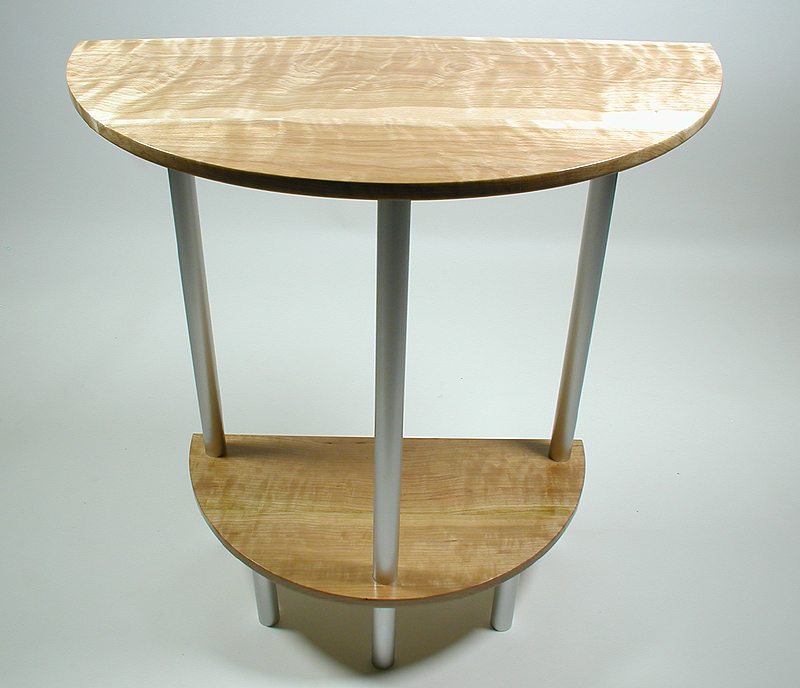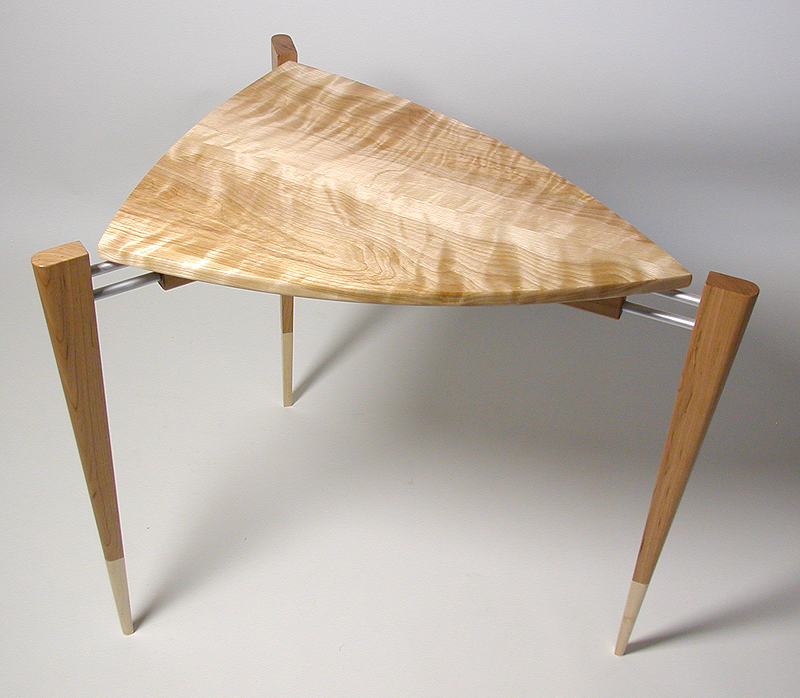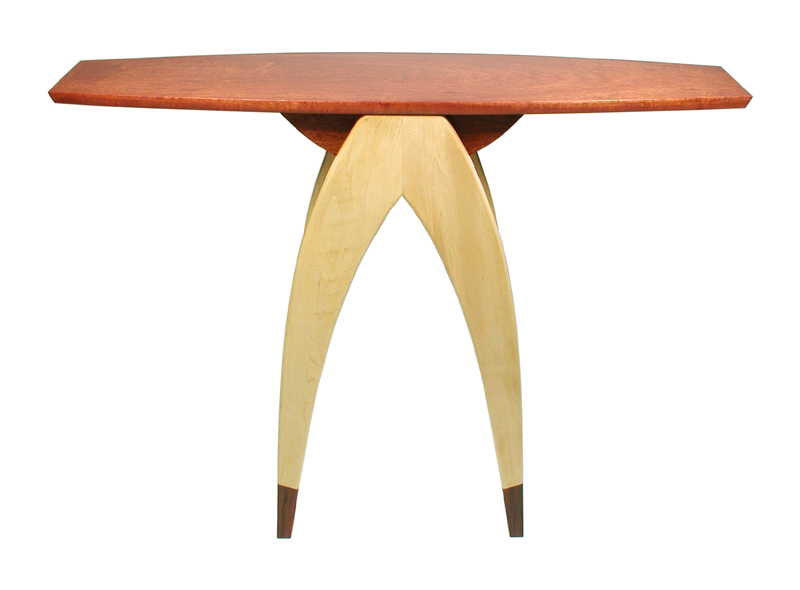
I tend to use maquettes as part of the design process. These reduced scale renditions of a furniture design help me to better visualize the design in three dimensions. The maquette also allows me to determine if both the proportions and aesthetics of a piece are fine or need to be improved. While toying with the maquette for a hall table base, I came upon a different orientation for the base…simply inverting the maquette provided me a completely different outlook on the design. The base then evolved from a V-shape to an arched look.
Orienting the maquette with the legs down eliminated the need for me to create a sub-base for the upper base, a sub-base which was to stabilize the V-shaped base above. This sub-base can be seen at the bottom of the maquette.This was not much of a design dilemma and if done correctly would have enhanced the V-shaped base above.
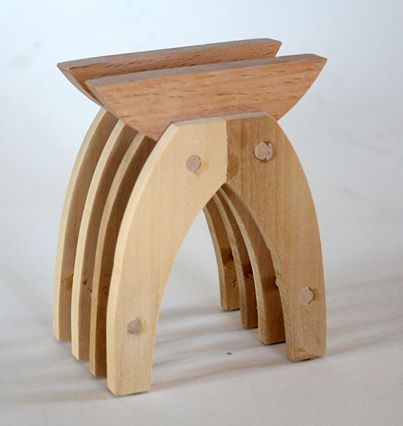
On the other hand, I now needed to create a structure to firmly hold the table top itself, since the base is arched and the pointed top has minimal latitude with which to securely fasten a table top. The new design of the base now opened up a possibility for me, to create a “wishbone” styled arch. The arched base could be simply an arch but why not create an image of something else while maintaining the arch structure and shape? I looked at a few wishbone details and re-designed the arch to better reflect the shape of a wishbone. In this process I also developed the semi-circular table top support for the table top which melds with the curves in the wishbone and would soon be part of a curved table top. This semi-circular support actually evolved from the original maquette orientation as you can see in the photo above. I also needed to consider the harmony of the table, do all the elements blend together well? I wanted the semi-circular table top support to blend in with the table top so I created it with the same wood species, in this case bloodwood. Bloodwood also nicely contrasts with the maple base.
The cocobolo feet on each of the legs are a small touch I included to bring some of the color down to the bottom of the “wishbone” shaped base and to create balance.The hall table also needed to have a narrow profile so I placed this criteria in my design. I made it narrow but at the same time stable. When I designed this hall table I use predefined measurements for typical hall table designs. I incorporated a curved top into the design with its widest part at the peak of the “wishbone” arch. I hope I have enlightened a few of you of the positive aspects in using a maquette as part of the design process.

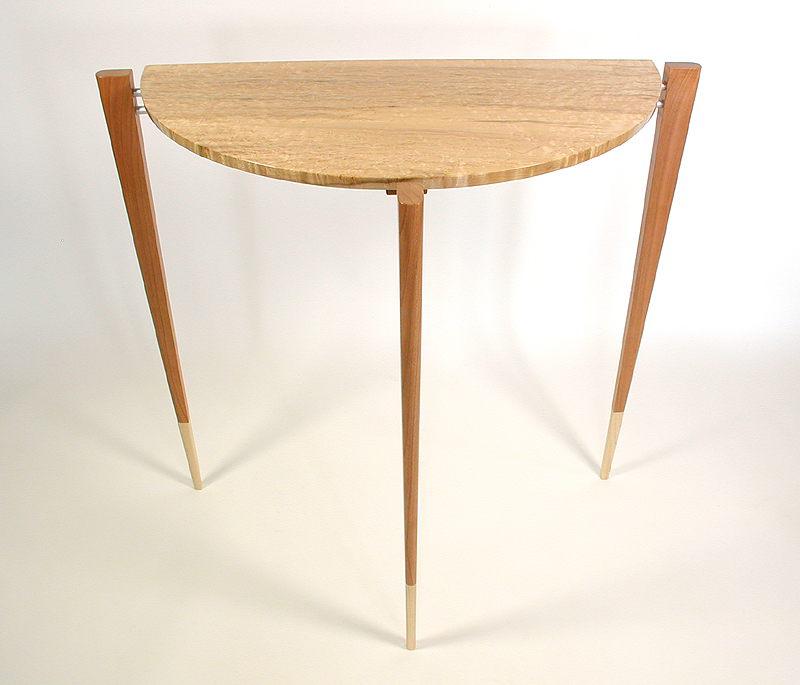
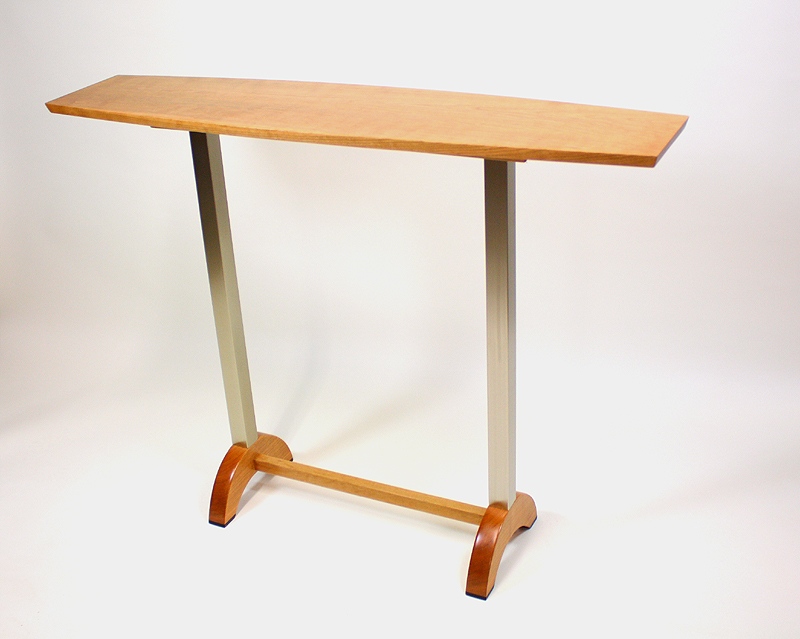
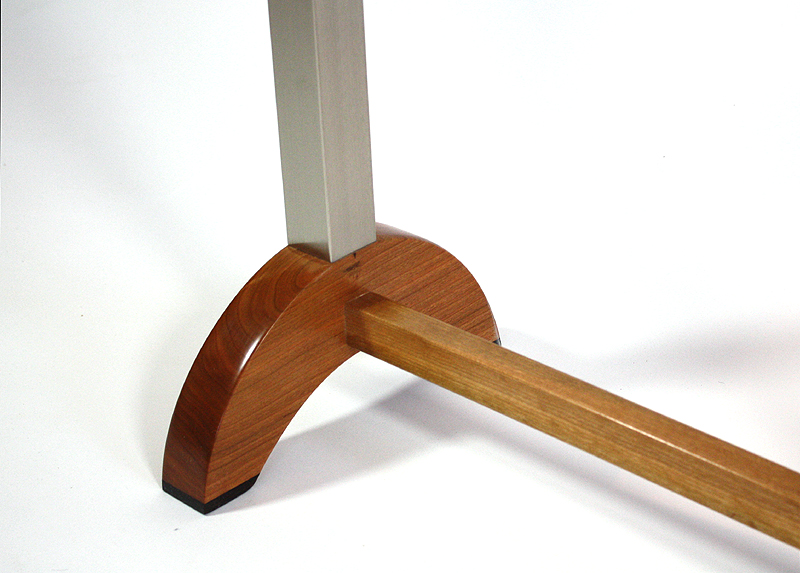

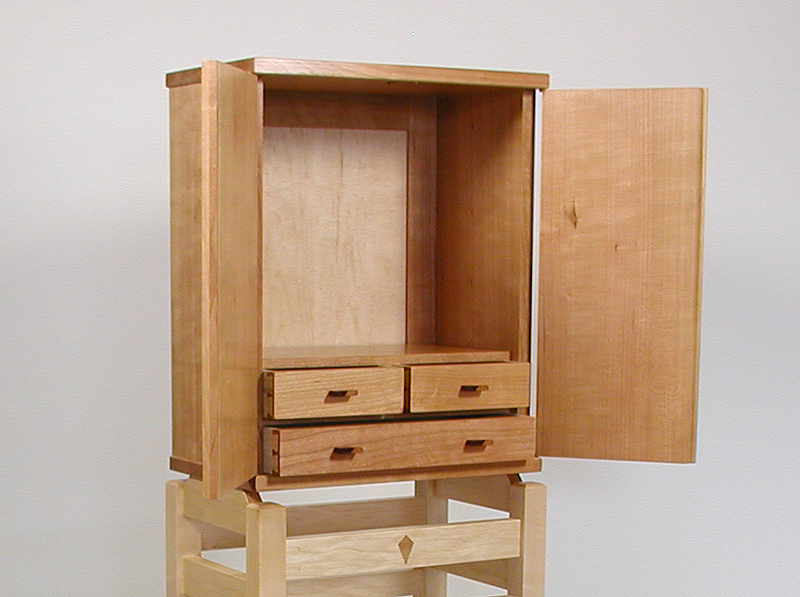

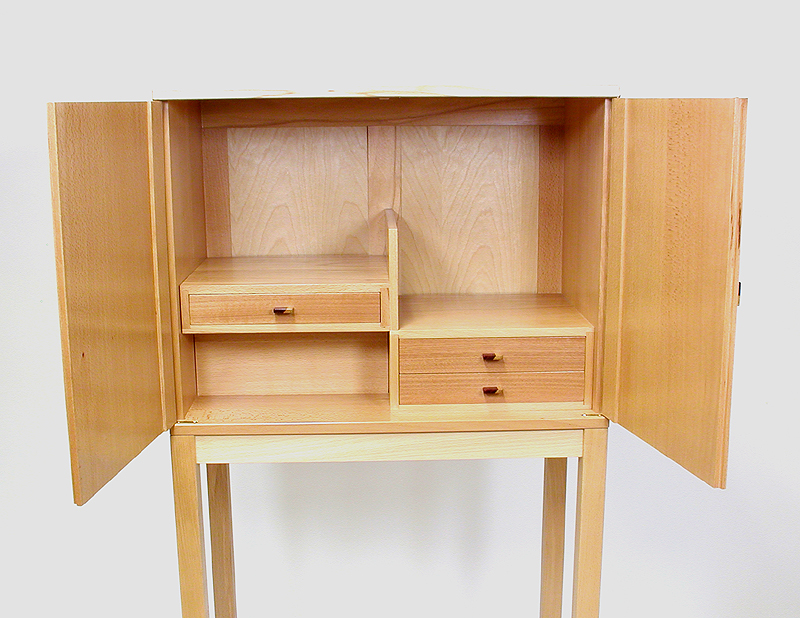
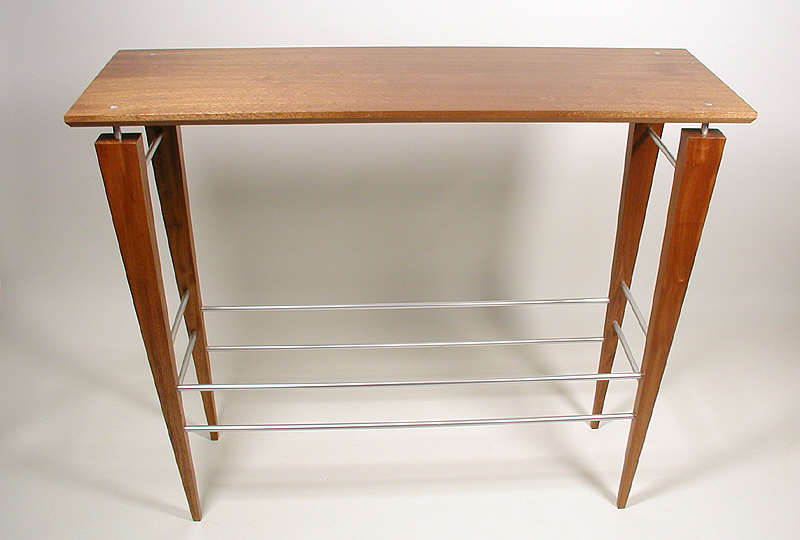
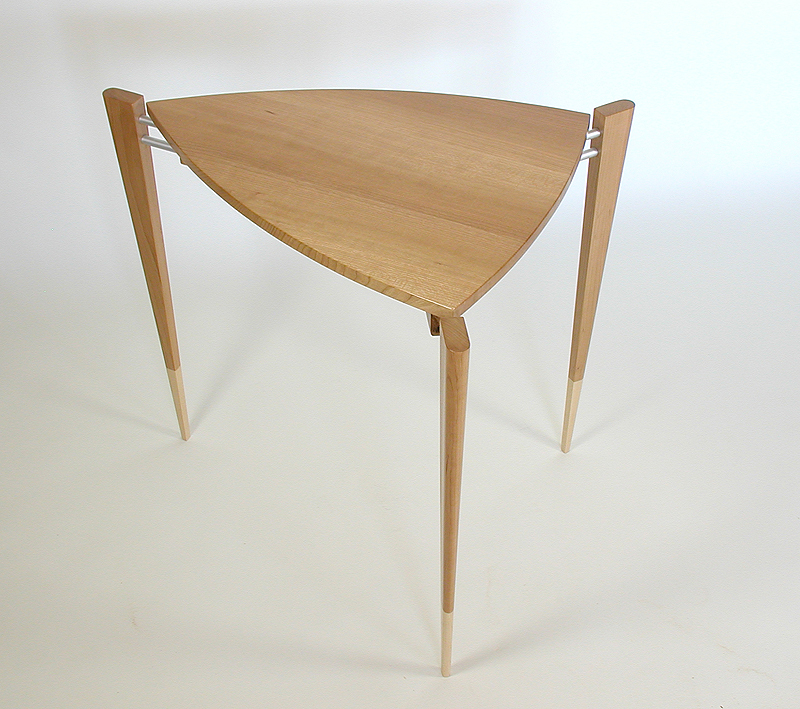
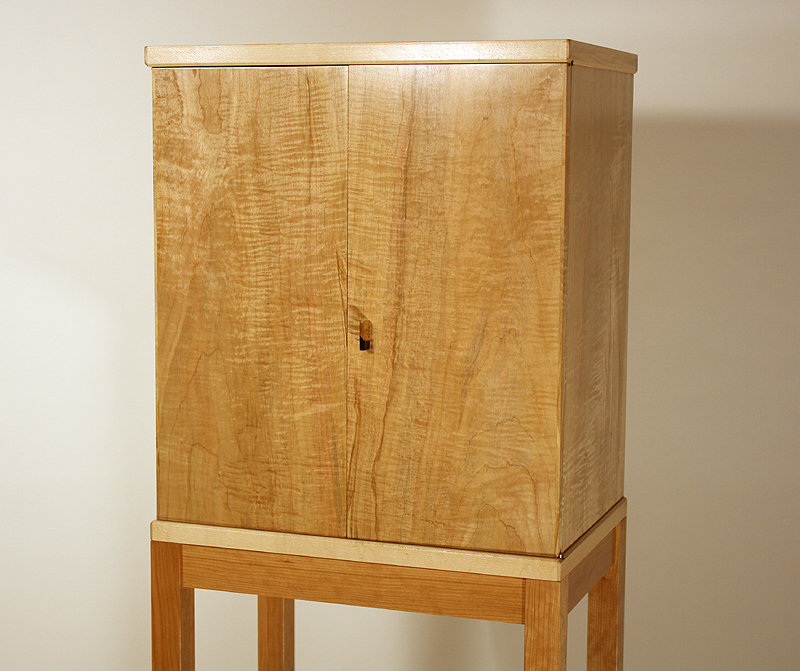
 Uniquely designed console table with curved, wishbone shaped legs. Shaped, curved maple legs with cocobolo feet. Metal is incorporated into the design. The curved top is figured bloodwood and the metal components have a satin finish to nicely contrast with the deep bloodwood. Surfaces are hand scraped and formed. Meticulous attention is provided to both detail and finishing. The table is available as either a smaller console table or a larger hall table. The wood is not stained and attains a natural patina over time and with exposure to ambient light. This console table is finished with multiple coats of thinned polymerized tung oil, polished and waxed.
Uniquely designed console table with curved, wishbone shaped legs. Shaped, curved maple legs with cocobolo feet. Metal is incorporated into the design. The curved top is figured bloodwood and the metal components have a satin finish to nicely contrast with the deep bloodwood. Surfaces are hand scraped and formed. Meticulous attention is provided to both detail and finishing. The table is available as either a smaller console table or a larger hall table. The wood is not stained and attains a natural patina over time and with exposure to ambient light. This console table is finished with multiple coats of thinned polymerized tung oil, polished and waxed.